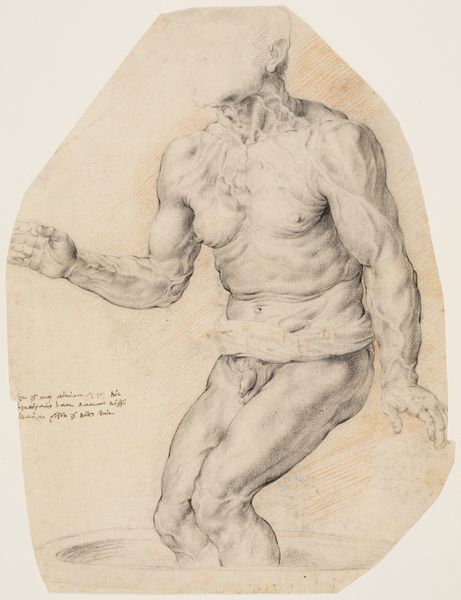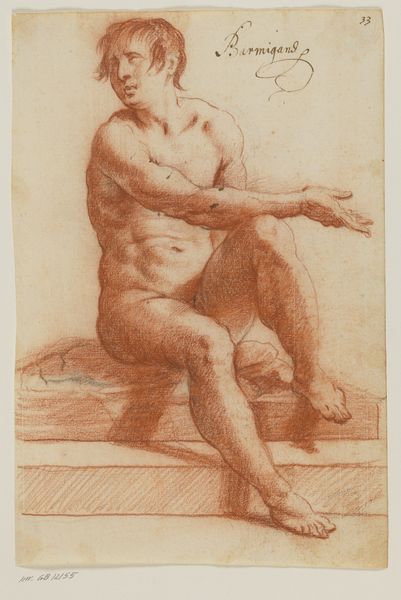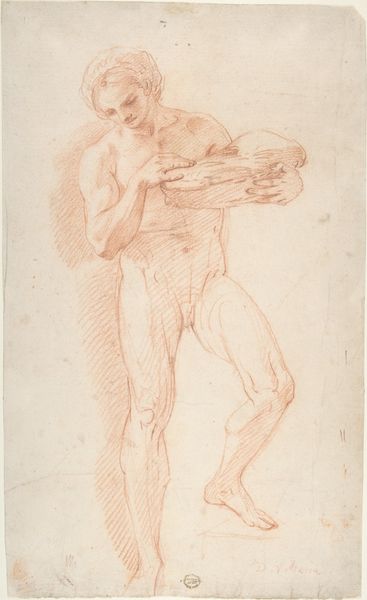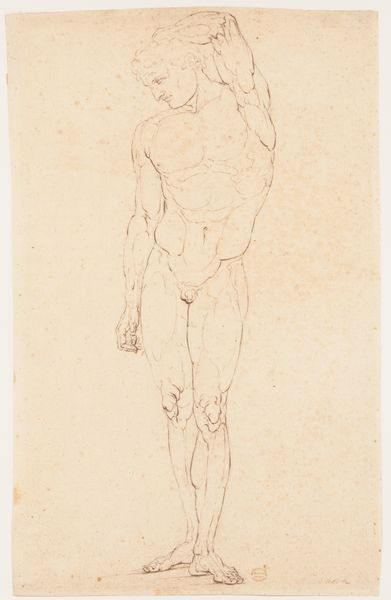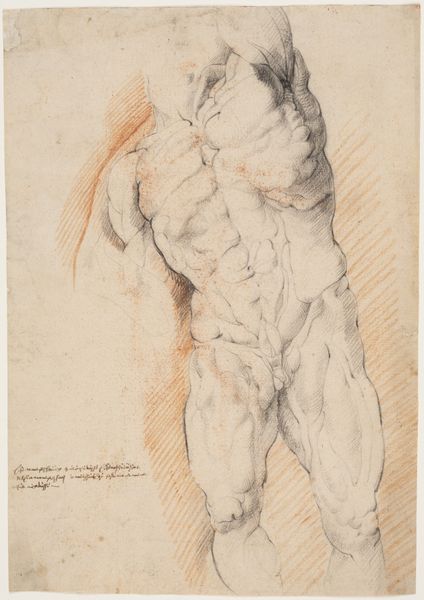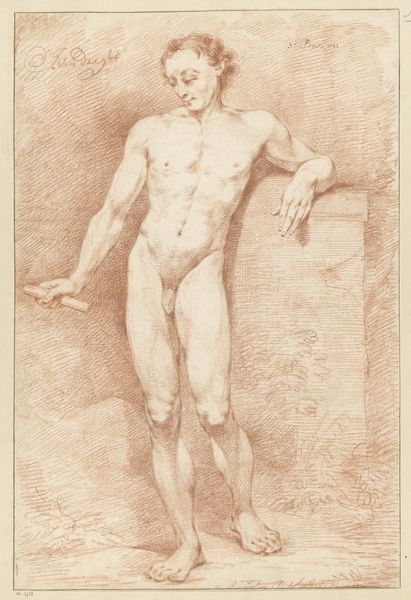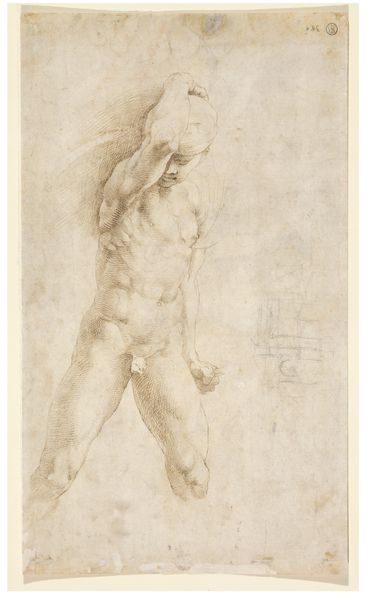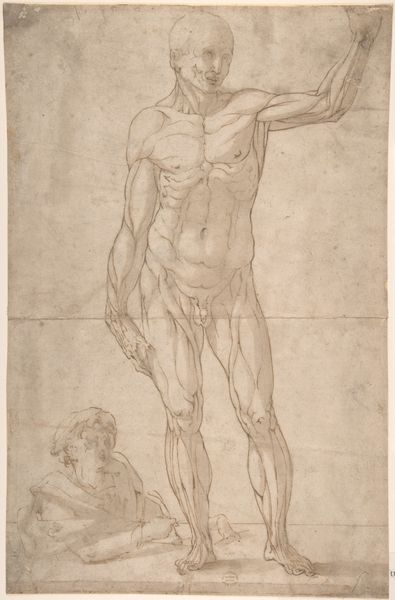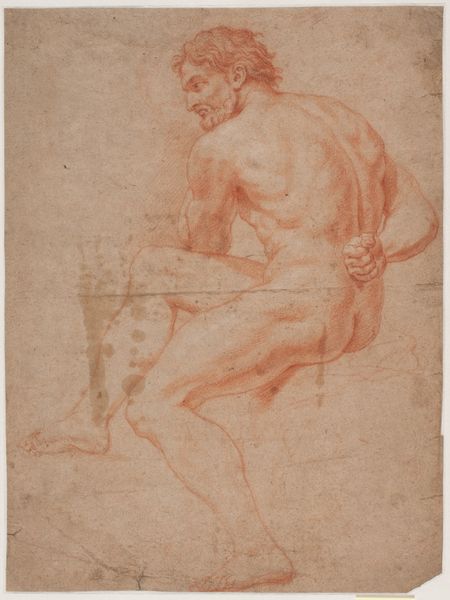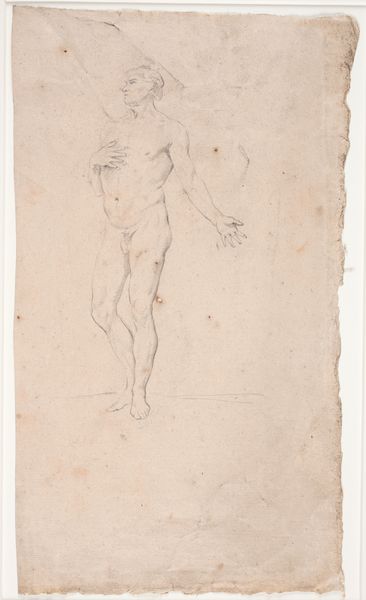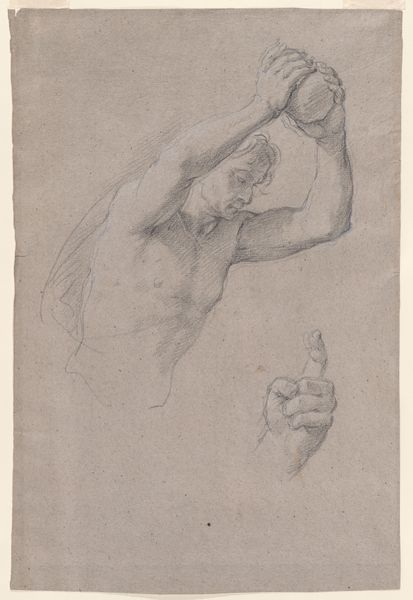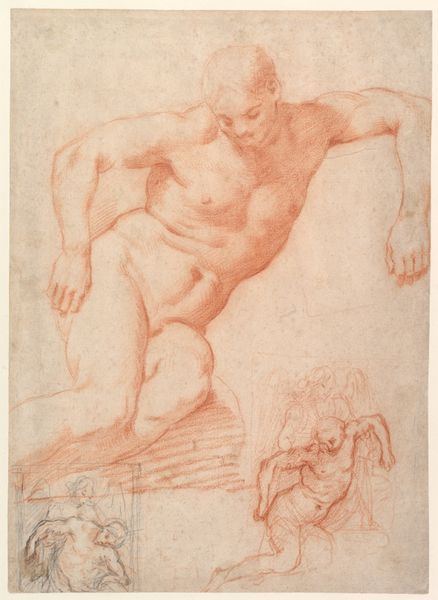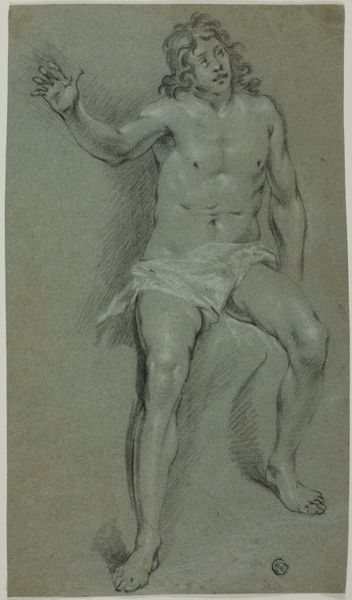
Den antikke statue ’En fisker (’Døende Seneca’)’ set forfra, halvt drejet mod højre 1628 - 1630
0:00
0:00
drawing, pencil
#
pencil drawn
#
drawing
#
baroque
#
pencil sketch
#
charcoal drawing
#
figuration
#
pencil drawing
#
pencil
#
nude
Dimensions: 368 mm (height) x 257 mm (width) (bladmaal)
Curator: This drawing by Willem Panneels, made between 1628 and 1630, depicts an antique statue titled "A Fisherman ('Dying Seneca')", rendered in pencil. Its current home is right here at the SMK. What's your initial take? Editor: There's a powerful vulnerability emanating from this figure, even in its unfinished state. The light catches the sinews, highlighting a physique that's both powerful and suffering. I’m struck by the artist’s hand visible in the layers of shading that form the character’s physique. Curator: Indeed, Panneels uses the pencil masterfully to convey both the physicality and the inherent drama. Notice the careful construction of the musculature and how the cross-hatching defines form and texture. This rigorous attention to structure exemplifies Baroque ideals, don't you think? Editor: I’d agree it’s rigorous, but there’s more going on than that for me. Consider how this was probably produced: tracing, copying, rubbing. It calls attention to its reproduction, how the making of a new artwork from an old one brings the labour involved to the foreground, doesn’t it? Curator: Interesting point. And in that reproduction, are we not also invited to contemplate the nature of idealised form versus lived experience? The statue is meant to invoke Seneca, a figure of immense stoicism, yet the drawing presents a very palpable sense of agony. Editor: Exactly. This wasn’t some abstract concept of ‘Seneca’, but a very physical interpretation born of real materials—paper, pencil, the artist's own skilled labour to wrestle them into the figure before us. Curator: I'm really interested in this distinction. We're talking about artistic practice itself being highlighted as an active production that leaves a lasting effect. This transforms the status into so much more than simply a copy! Editor: Precisely! I now wonder how many copies were created and distributed, shaping understanding, while employing many. Curator: Yes, a material history. A new way to understand Seneca indeed. Thanks to Panneels’ pencil and paper.
Comments
No comments
Be the first to comment and join the conversation on the ultimate creative platform.
